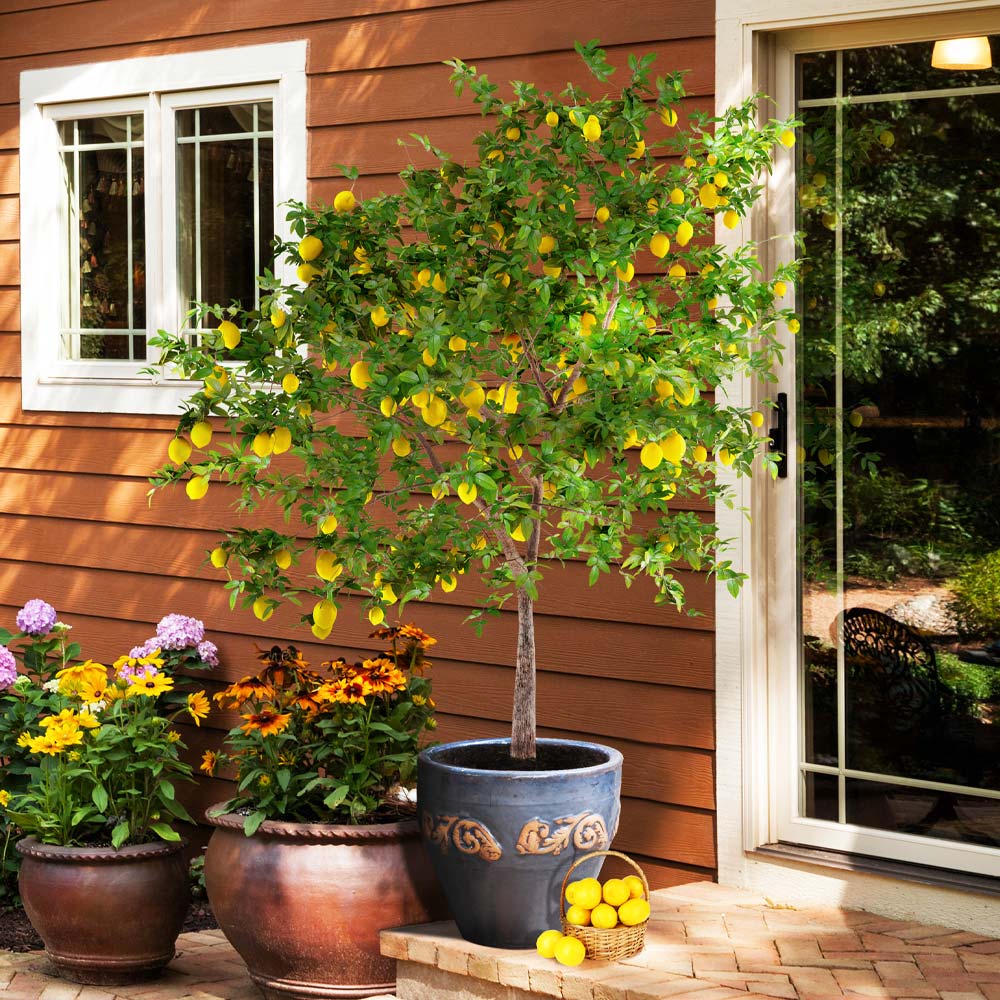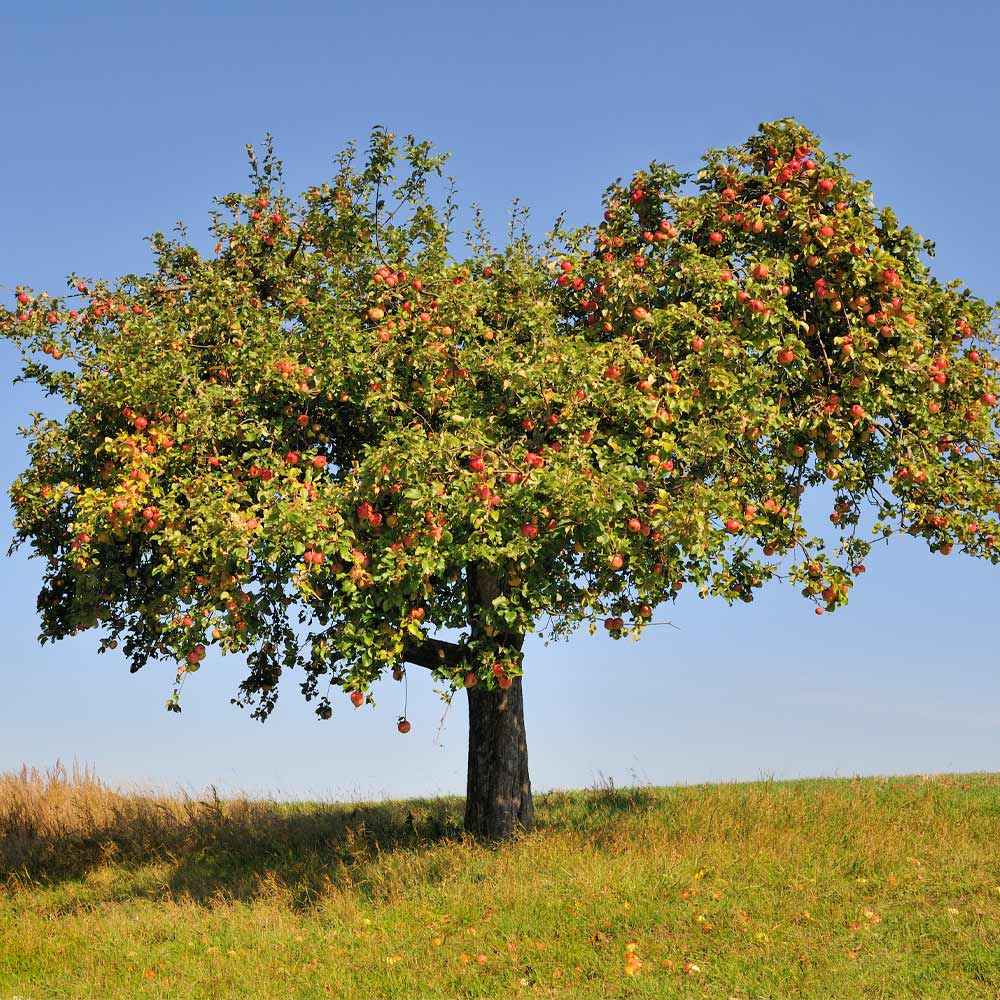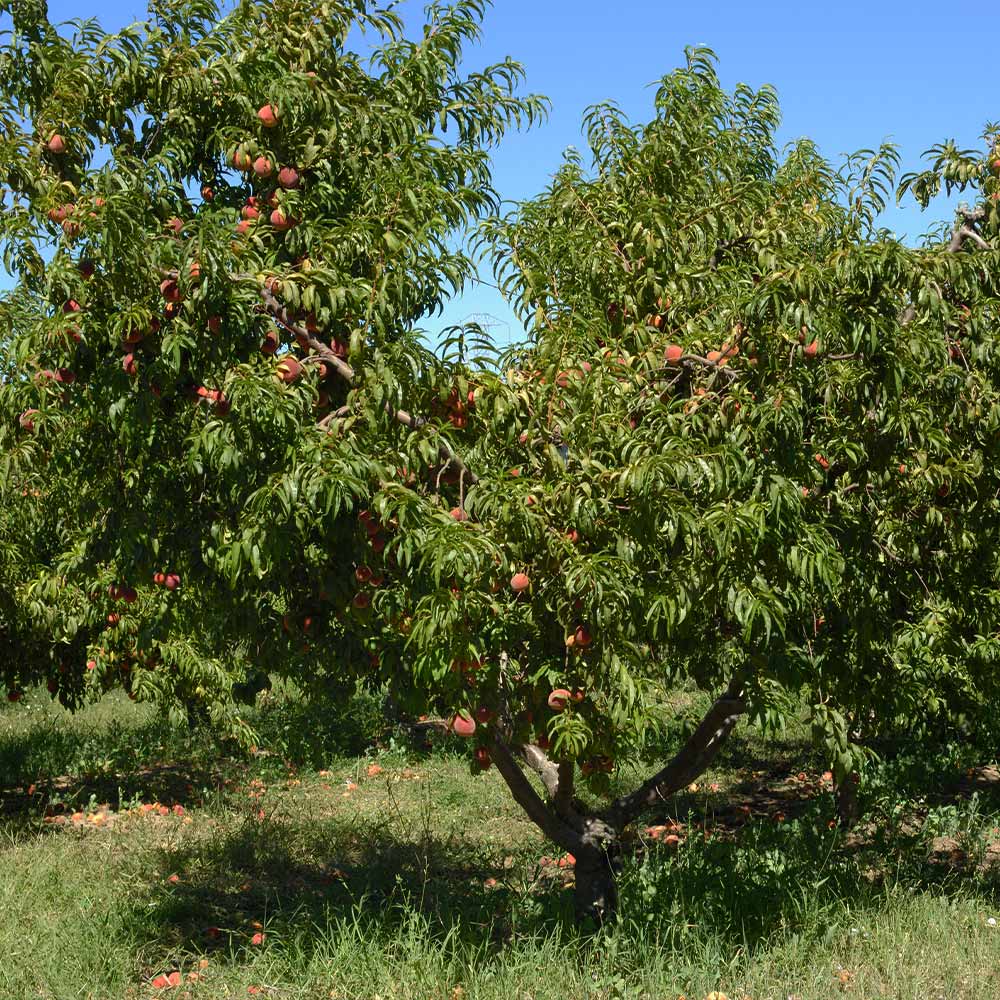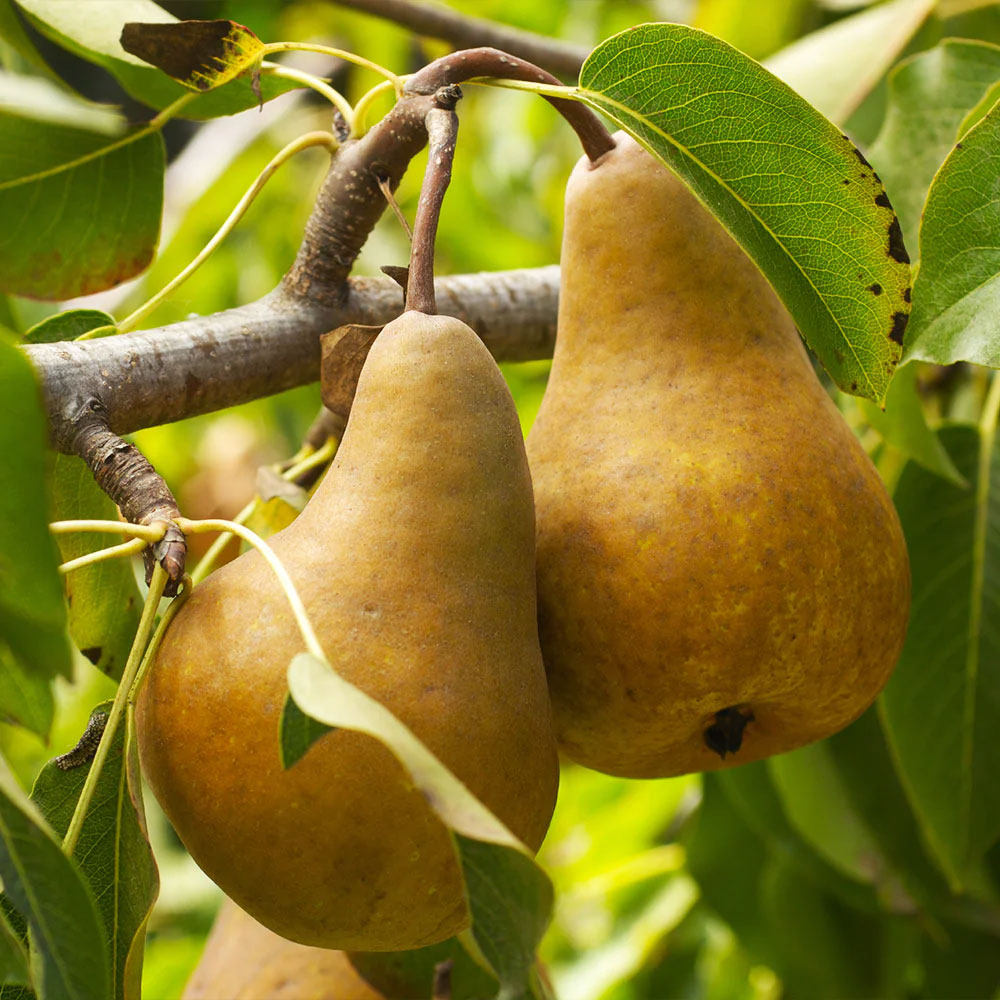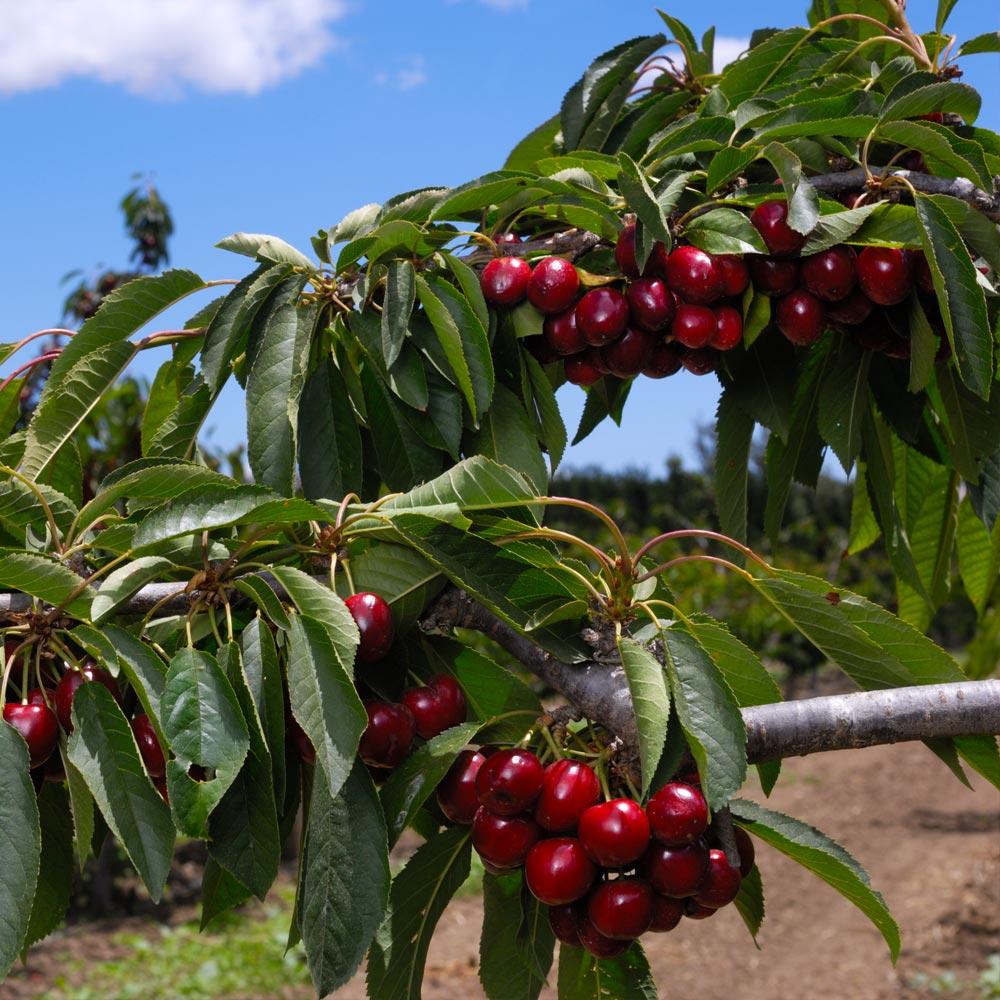8 Easy Fruit Trees to Grow — Enjoy a Home-grown Harvest With This Advice
Skip the store bought stuff and grow your own bumper crops with these fruit trees that are perfect even for beginner gardeners

Growing your own fruit may seem like a task for gardening professionals, yet you don't have to commit to being a full-time homesteader to enjoy home-grown harvests. There are a number of easy fruit trees literally anyone can grow.
Yep, plant these fruit trees, and with minimal care, you could be harvesting your own bumper crop each year. Whether you swap crops with neighbours, or cook, preserve or freeze your bounty, so you have a stash through the winter, growing your own fruit helps to keep you healthy, fit and saves on food bills.
So what are the easiest fruit trees to grow in a modern garden? Here's what experts suggest.
1. Meyer lemon trees
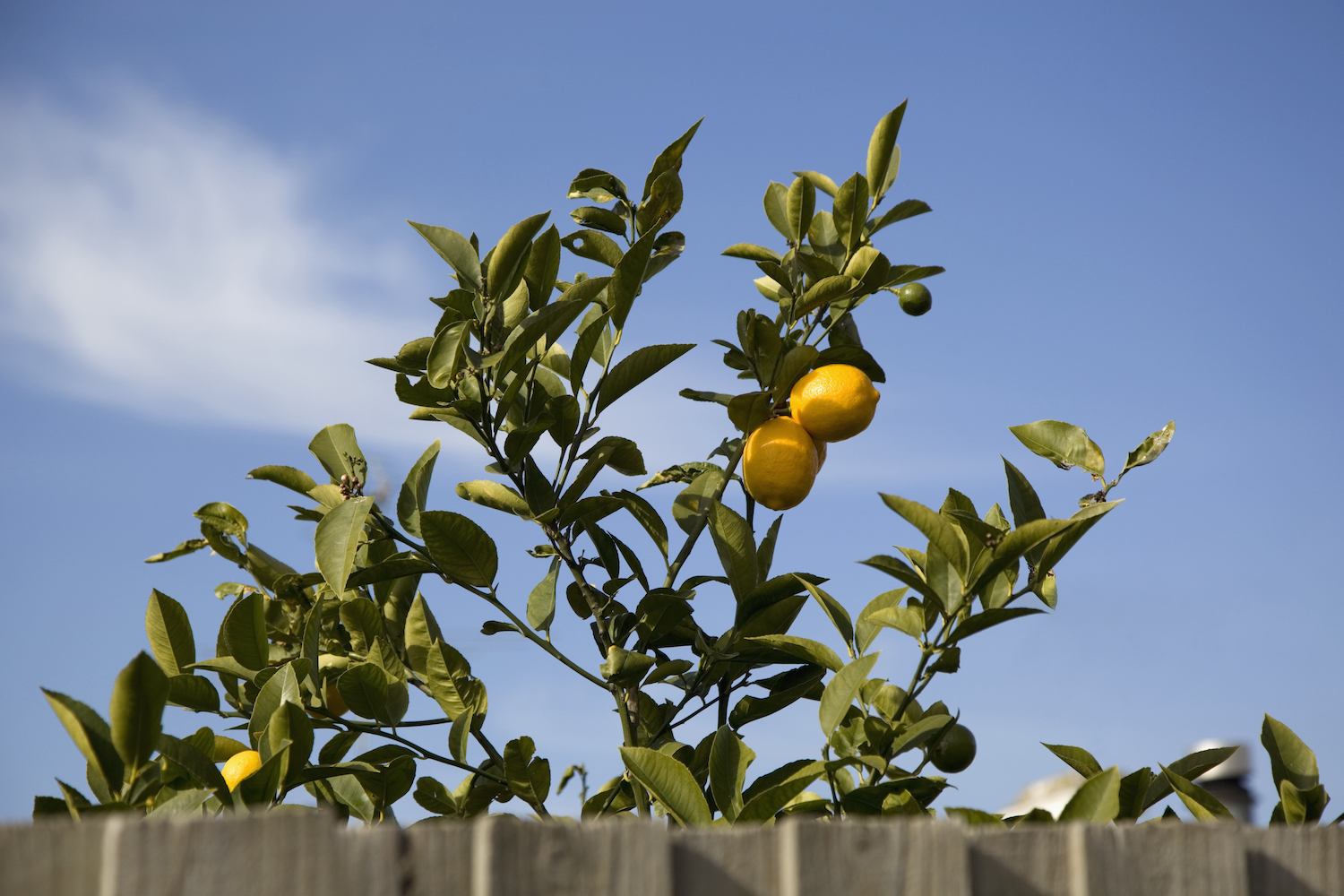
If you think you need to live in Southern California to grow lemon trees, think again. Of course, having year-round sunshine helps when growing citrus fruits but it's not essential for this type of lemon tree. With a few simple steps you could be picking lemons from your own tree for G&Ts or homemade lemonade on a regular basis.
'Meyer Lemon Trees are easy to grow, especially for beginners, because you can grow them in all of the U.S. growing zones,' says Fast Growing Trees plant expert Sydni D'Amico. 'In zones 8-11, you can keep them outdoors year round and in zones 4-8, and they're also fruit trees you can grow in pots. Bring the tree indoors during the late fall through winter (your tree will still produce fruit indoors).
'The great thing about Meyer Lemon trees is that they produce fruit up to four times per year, so you can get fruit during all the seasons,' Sydni says, and recommends choosing a full sun location for your Meyer Lemon Tree. 'If indoors, place it in a South facing window,' she says. 'You can even use grow lights for supplemental sunlight if needed. Make sure your pot and soil mix has good drainage. Meyer Lemon trees don’t like wet roots, so make sure the top 2 inches of soil dries out in between waterings. '
'Water your tree slowly with about 1 gallon of water, stop watering once the excess water drains out of the bottom of the pot (or after two minutes if planted in-ground). Because they are prolific fruiters, Meyer Lemon trees are heavy feeders.
'Trees planted outdoors in the ground should be fertilized in early spring and late summer with a slow release fertilizer. Trees planted in containers need to be fed more often since the nutrients leach out of the pot when you water.
'Feed your potted Meyer Lemon Tree with a balanced slow release citrus fertilizer when planting, the end of winter, early summer and again in the fall. Espoma Citrus tone is a great choice if you want to find something locally.'
2. Chicago hardy fig tree
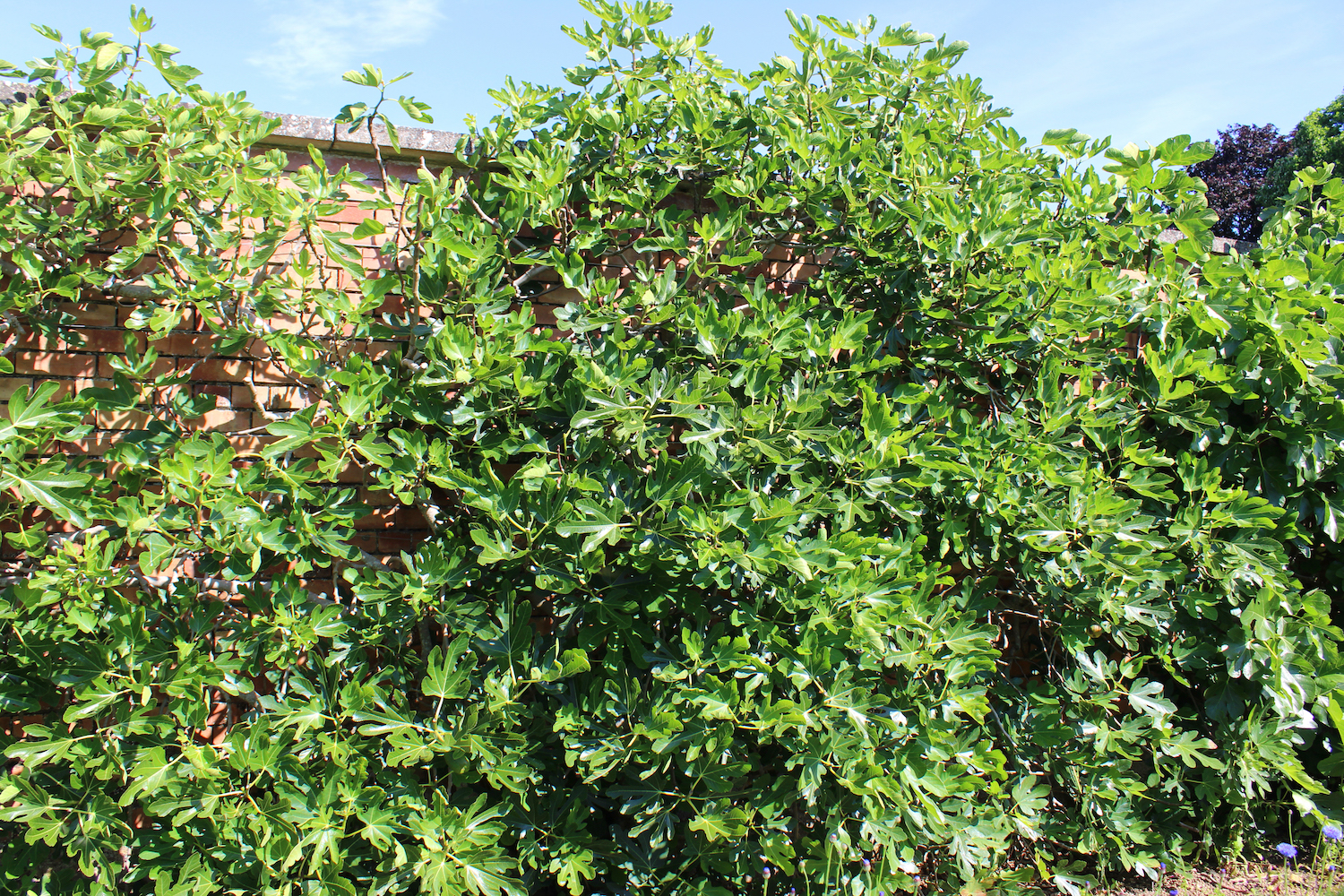
Fig trees may summon images of warm, Mediterranean destinations, but this breed is not called the Chicago Hardy fig for nothing. It can survive and thrive in surprisingly chilly spots. Offering up fresh figs to eat or make jam or chutney with, plant this beauty for summer flavors all-year round. Obviously, choose a variety suitable for your region.
'Chicago Hardy Fig Trees are easy to grow for beginners in Southern and Northern U.S. locations (zones 5 -10) because they are cold hardy down to -10°F,' says Sydni. 'They can withstand harsh winters, but they require low chill hours in order to fruit, so they can fruit in both warm and cool climates. They are also self-fertile, so you will get fruit with only one tree.'
'Chicago Hardy Fig Trees bloom and set fruit in the spring,' adds Sydni. 'The figs ripen and are ready for harvest between July to October. Since they are grown from grafts, you’ll also get fruit faster. However, Chicago Hardy Fig trees typically take one to two years to get established before fruiting.'
'In more Northern areas, plant your Chicago Hardy Fig tree in a full sun location. In more Southern regions, plant your tree in a partial-sun location (morning sun/afternoon shade) for optimal growth.'
'Figs have a fair drought tolerance. For the first growing season, water your tree regularly (about once to twice a week) to get the roots established. Once your fig tree is established, give it a deep watering once every one to two weeks.
'When the tree is in a dormant state in late fall/winter, only provide enough water to keep the soil slightly moistened. If your fig tree is planted in a container, it will require more frequent watering — just check the top 2 inches of soil to find out.'
Price: $69.95
Size: Two gallon
3. Apple tree
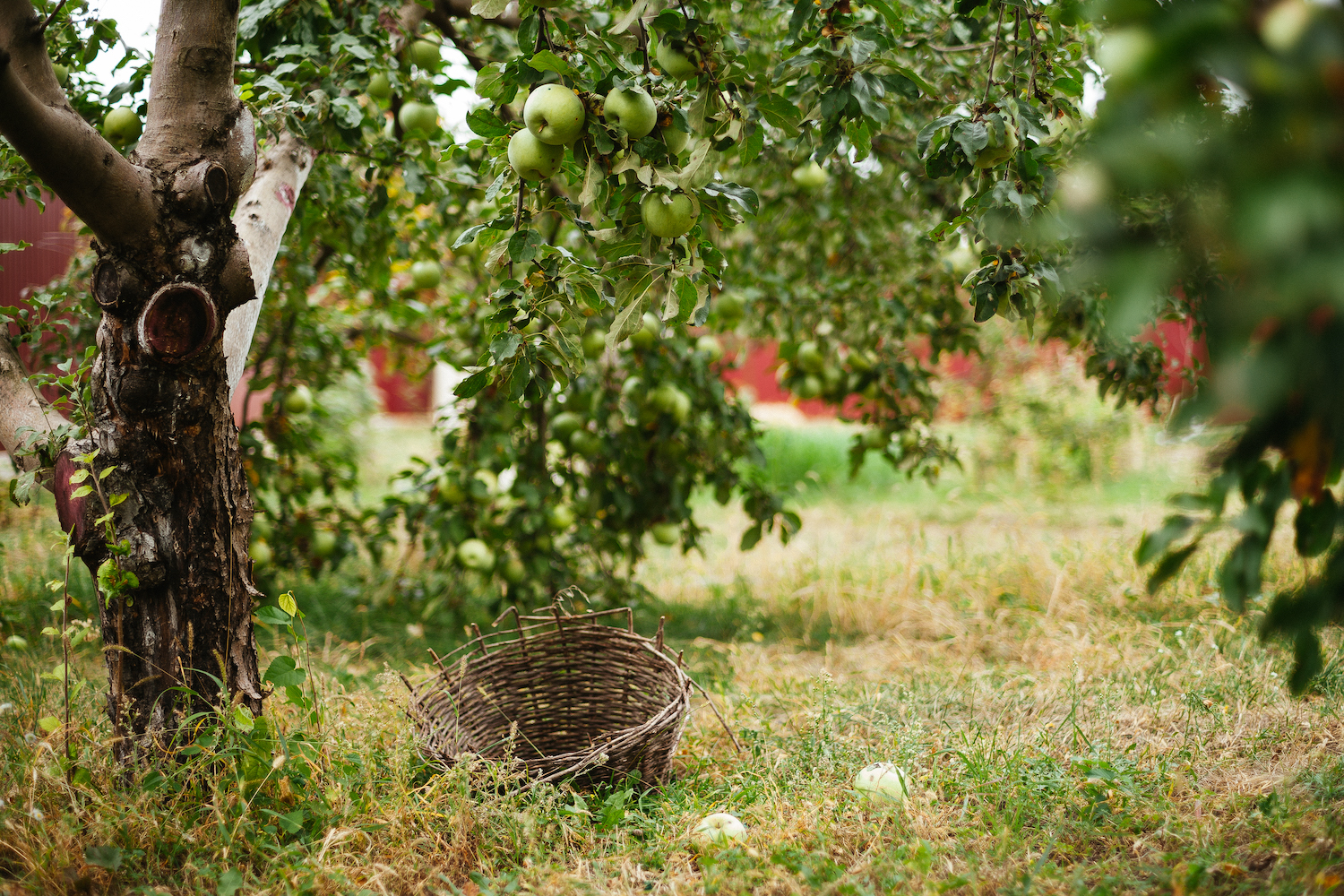
Apples are a relatively easy crop to grow in your backyard. However, the type of apple tree to plant will be determined by where you live, as apples prefer a cooler climate to soft fruits like peaches or plums.
'Apples are notoriously hard to grow in Southern California, but both my trees are producing well,' says San Diego-based gardener, Kevin Ispiritu, author of Epic Homesteading. 'I selected the varieties Dorsett Golden and Anna because they can grown in warm climates.
'Look for the number of chill hours the fruit variety requires. Chill hours tell you the number of hours a plant needs to accumulate in the 32-45ºF (0-7ºC) range in order to flower and set fruit. Here in San Diego, I plant "low chill" varieties. In a northern growing zone, you'd want plant varieties that require high chill hours.'
'Honeycrisp™ Apple Trees are easy to grow for beginners in Northern U.S locations (zones 3-8), because they are cold hardy down to -30°F, so you won’t have to worry about them getting cold damage in the winter months,' says Sydni D'Amico at Fast Growing Trees.
'This tree is dioecious, meaning it needs another apple tree variety as a pollination partner in order to set fruit. We recommend planting a Honeycrisp™ Apple Tree with a McIntosh Apple Tree (zones 4-7), Golden Delicious Apple Tree (zones 4-9), or Fuji Apple Tree (zones 4-9). Make sure they are planted within 50ft. of each other so they can properly pollinate and set fruit.
'Honeycrisp Apple trees typically take 2-5 years to get established before fruiting. They set flowers/fruit in mid to late Spring and the apples are ready for harvest around September.
'Choose a full sun location and water it regularly each week. When the tree is in a dormant state in late fall/winter, only provide enough water to keep the soil slightly moistened. When new growth emerges in the spring, return to a regular weekly watering schedule.'
4. Plum tree
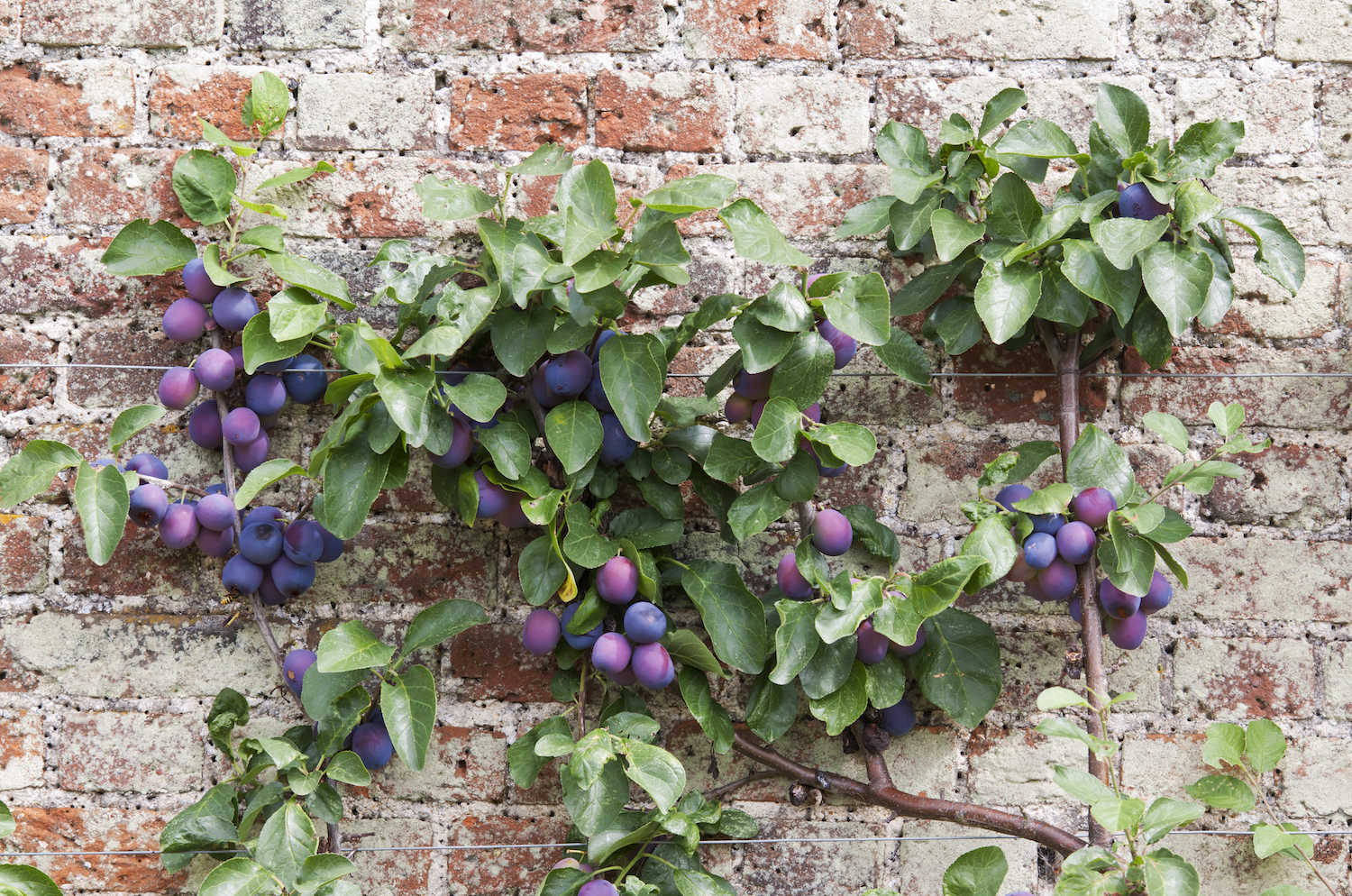
Plucking sweet juicy plums to eat straight from a tree is a summer treat, and plum crumble is a winter highlight. Plum trees are also an easy fruit tree to grow. Certain breeds fair better in certain regions, so peruse local garden centres and choose what's right for your USDA Hardiness zone.
'Santa Rosa Plum Trees are easy to grow in the Southern U.S. locations (zones 5-9),' says Sydni D'Amico. 'They are adaptable to many soil types, and since they are a Japanese variety rather than a European variety plum tree, they are more suitable for warm and humid climates.
'They are also self-fertile, so you will get fruit with only one tree, and the plums are ready for harvest around July. Santa Rosa Plum trees typically take 3-6 years to get established before fruiting.
'They like a full sun location and a generous weekly watering (twice a week for the first growing season to help promote growth).
'Santa Rosa Plum Trees benefit from regular fertilizing to ensure a healthy growing season,' Sydni adds. You need to know when to fertilize fruit trees like plums, too. 'Young trees that are three years or younger will benefit from about a half cup of balanced 10-10-10 fertilizer formula applied once around mid-April and again in early June,' Sydni says. 'More established plum trees will require one annual application of the same balanced formula mid-April. A good rule of thumb is to use 8 ounces of fertilizer for every year of the tree’s age.'
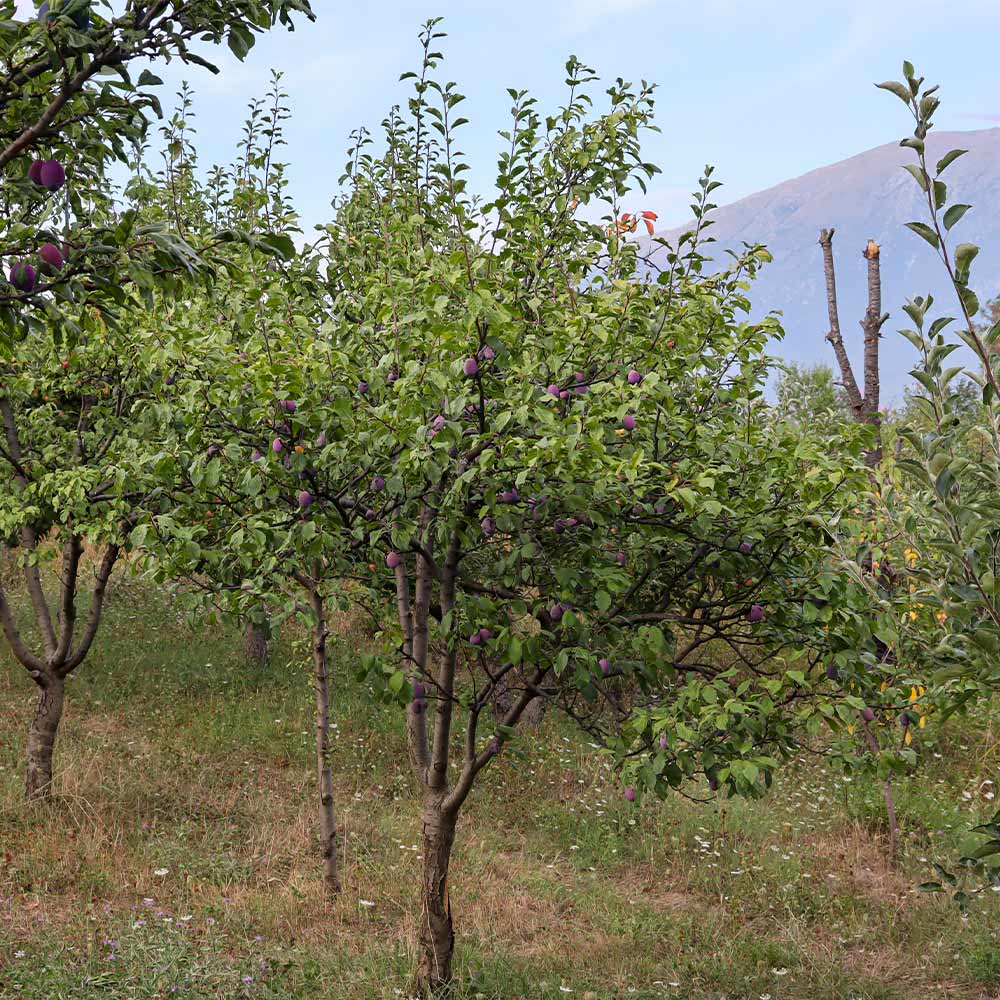
Price: $149.95
Size: 4-5 feet
5. Peach tree

According to our experts peach trees are easy for anyone to grow, although you will need to live where it's warm enough for them to flourish. We can't promise good results if you live in Alaska.
'Elberta Peach Trees are easy to grow in U.S zones 5-8 because they are disease/pest resistant, grow rapidly and mature quickly,' says Sydni. 'As they are self-fertile you will get fruit with just one tree.
'Expect a harvest around September. Although Elberta Peach trees typically take 2-4 years to get established before fruiting.
'Find a sunny location for planting your Elberta Peach tree and keep its soil moist. Generally, watering once or twice a week on a slow flow with a garden hose for about 2 minutes will be sufficient. For more mature trees increase watering time to 8 minutes,' Sydni says. 'During times of extreme heat, your tree may need additional water. In late fall/winter, only provide enough water to keep the soil slightly moistened.'
'After your tree has been in the ground for 6 weeks, apply 1lb of a balanced fertilizer formula such as 12-12-12,' Sydni says. 'In addition, apply ¾ lb. of fertilizer in the spring before the tree pushes out new growth. Repeat this process in the summer and fall to get the most out of your Elberta Peach tree.'
6. Pear tree

Much like apple trees, pears are pretty self-sufficient, particularly if you receive a lot of rainfall. Although they will require some pruning to thin out bushy branches.
'Pears are an underrated yet beginner-friendly fruit tree,' says Maryland-based gardening and preserving coach, Robin Phelps, founder SowManyPlants. 'Varieties such as Bartlett and Anjou are known for their sweet, juicy fruits.
'Plant pear trees in a location with full sunlight and well-draining soil. Pears benefit from regular pruning to maintain their shape and promote air circulation. While they may take a few years to mature, the reward of homegrown pears is well worth the wait.'
'Pears can grow in Zones 4–9,' says Claire Splan, author, California Fruit & Vegetable Gardening. 'Plant them in full sun. Most pears prefer well-draining soil, but can tolerate heavier soil. Prune off the top third of the tree to encourage better root formation and a healthier tree structure.
'Unless you live in a region that receives a good deal of summer rain, pear trees need deep watering about once a month. Reapplying mulch each year will help keep the moisture in the soil. Avoid high-nitrogen fertilizers, which will encourage growth that is susceptible to fireblight and freezes.'
7. Cherry trees

'Cherry trees are not only delightful for their sweet and tart fruits but also for their relatively easy maintenance,' says Robin Phelps. 'Sweet cherry varieties like the Bing or Stella are self-pollinating, eliminating the need for multiple trees for cross-pollination.
'Cherries thrive in well-drained soil and full sunlight. Regular pruning helps manage their size and shape, making them suitable for smaller garden spaces.'
'Cherries can be grown in Zones 4–10, but do best in areas with dry summers,' adds Claire Splan. 'Humidity can spread diseases, and rain will cause the fruit to split.
'They also require between 500 and 1,000 hours of winter chill (hours below 45°F), depending on the variety. Dwarf trees can be grown in large containers. The best time to plant is while the tree is still dormant.
'Apply a 6-inch layer of compost mulch every spring. Do not overfeed; too much nitrogen can make the tree susceptible to disease and freeze damage. Cherries are shallow rooted and should be kept moist but not soggy. Sour cherries are more drought tolerant than sweet cherries.'
8. Kumquats

These citrus fruit trees are often grown for ornamental purposes, yet the tiny, tart fruits are edible and they're easy to grow. Kumquats can be eaten whole with the peel or used for citrus sauces, desserts and garnishes.
'Kumquat trees are well-suited for container gardening, making them versatile for patios or balconies,' says Robin Phelps. 'Provide them with well-draining soil, ample sunlight, and protection from frost. Container cultivation also allows for easier management of soil conditions.'
''All kumquat varieties are semi-dwarf and self-fertile,' says Claire Splan. '"Marumi", "Fukushu", and "Nordman Seedless Nagami" are popular choices. "Centennial Variegated" and "Meiwa" are sweeter varieties. "Nagami" is the most cold-hardy citrus.'
'If your citrus seems to be getting leggy, that’s an indication that it is getting too little sun and may need to be relocated. In cooler climates, trees can be given additional protection from potential frosts by planting against a south-facing wall.
'They can do well in large containers and can be brought inside or to a protected area when freezes are predicted. Citrus prefer a pH level of 6.0–7.5 and lots of organic matter. Add compost to the soil before planting.'
Be The First To Know
The Livingetc newsletters are your inside source for what’s shaping interiors now - and what’s next. Discover trend forecasts, smart style ideas, and curated shopping inspiration that brings design to life. Subscribe today and stay ahead of the curve.
Jacky Parker is a London-based freelance journalist and content creator, specialising in interiors, travel and food. From buying guides and real home case studies to shopping and news pages, she produces a wide range of features for national magazines and SEO content for websites
A long-time contributor to Livingetc, as a member of the team, she regularly reports on the latest trends, speaking to experts and discovering the latest tips. Jacky has also written for other publications such as Homes and Gardens, Ideal Home, Red, Grand Designs, Sunday Times Style and AD, Country Homes and Interiors and ELLE Decoration.
-
 5 Bathroom Layouts That Look Dated in 2025 — Plus the Alternatives Designers Use Instead for a More Contemporary Space
5 Bathroom Layouts That Look Dated in 2025 — Plus the Alternatives Designers Use Instead for a More Contemporary SpaceFor a bathroom that feels in line with the times, avoid these layouts and be more intentional with the placement and positioning of your features and fixtures
By Lilith Hudson Published
-
 Why Decorating With Mustard Yellow Helps Fill Your Interiors With a Sense of "Confident Calm"
Why Decorating With Mustard Yellow Helps Fill Your Interiors With a Sense of "Confident Calm"There is so much more to decorating with this turmeric-tinted sauce-wiggled-on-a-hotdog not-quite-yellow shade than meets the eye
By Amy Moorea Wong Published
